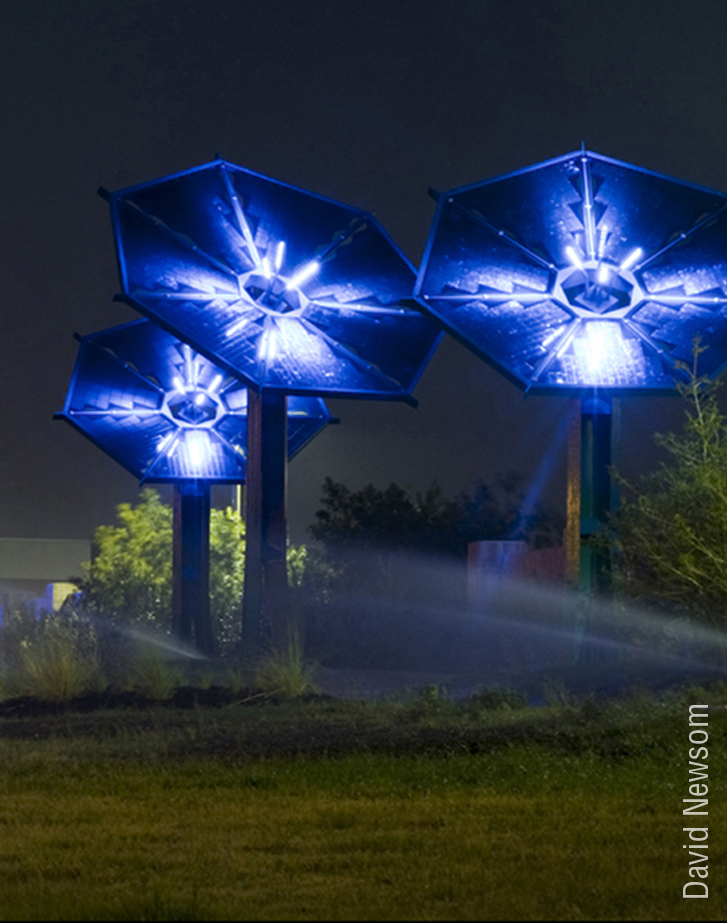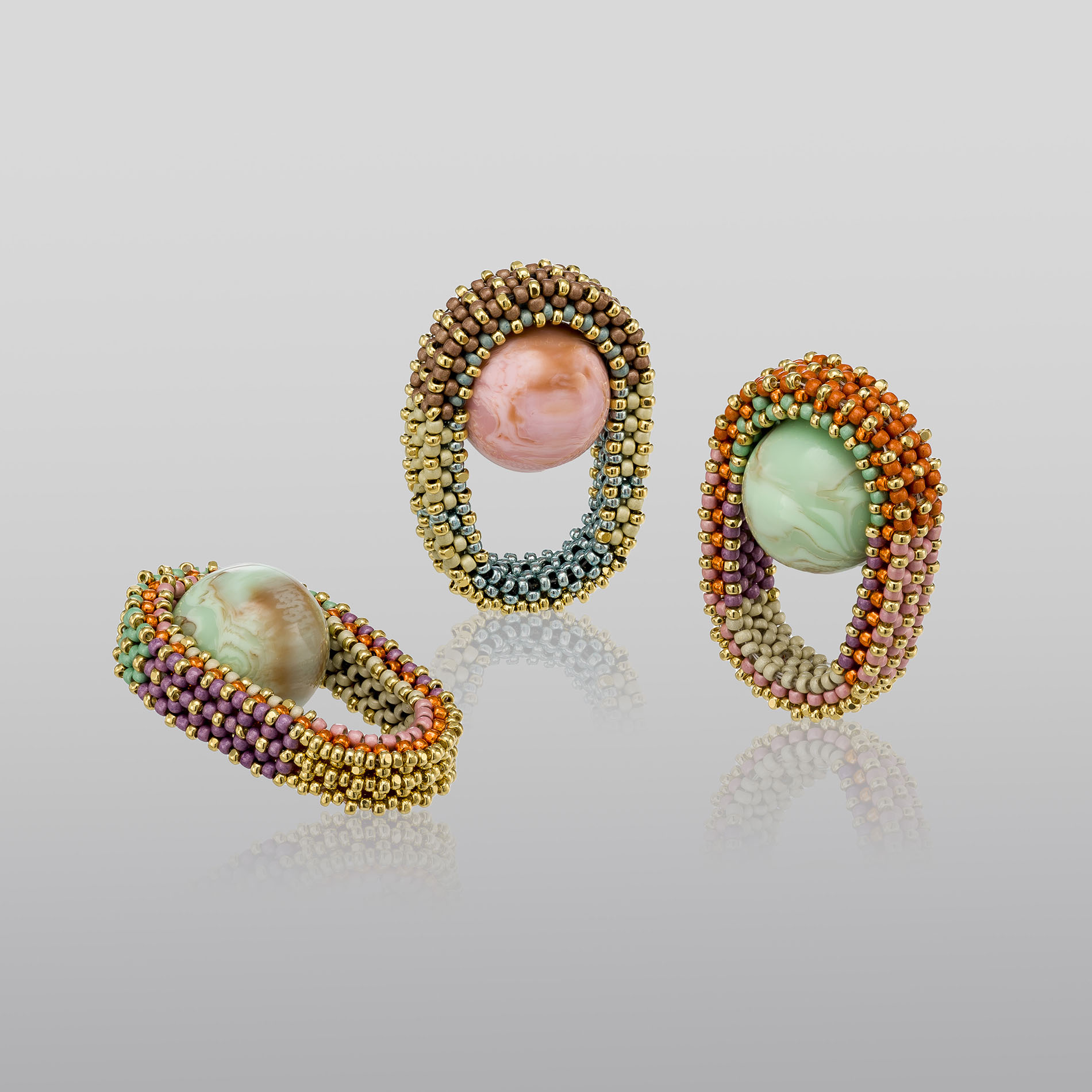“Fast fashion” – it’s cheap, trendy, lasts a season or two (if that), and quickly ends up in a landfill. But its negative social and environmental impacts last far longer. More than 11 million tons of textiles are landfilled in the U.S. each year, according to the U.S. Environmental Protection Agency. That’s almost 8% of all landfilled material — a burden on municipalities facing increased costs and decreasing options for waste disposal.
And the environmental cost of replacement apparel is enormous! The fashion industry annually consumes enough water to meet the needs of 5 million people. The industry generates 20% of global wastewater (from fabric dyeing and treatment) and 10% of annual global carbon emissions – more than international flights and marine shipping combined. And global apparel consumption is projected to nearly double in 10 years, increasing the industry’s already huge environmental footprint.
But now, thanks to the ingenuity of dedicated and talented craft artists, consumers have elegant, eco-friendly alternatives. Over 60 artists are displaying climate-conscious clothing, jewelry and accessories in Craft Optimism, the Smithsonian’s first craft show to celebrate creative ideas for addressing climate change. Online now through 5/1, Craft Optimism features artists who reimagine raw materials, lend modern interpretations to ancient earth-friendly techniques, and design for longevity to minimize environmental impacts.
I. Reimaging raw materials
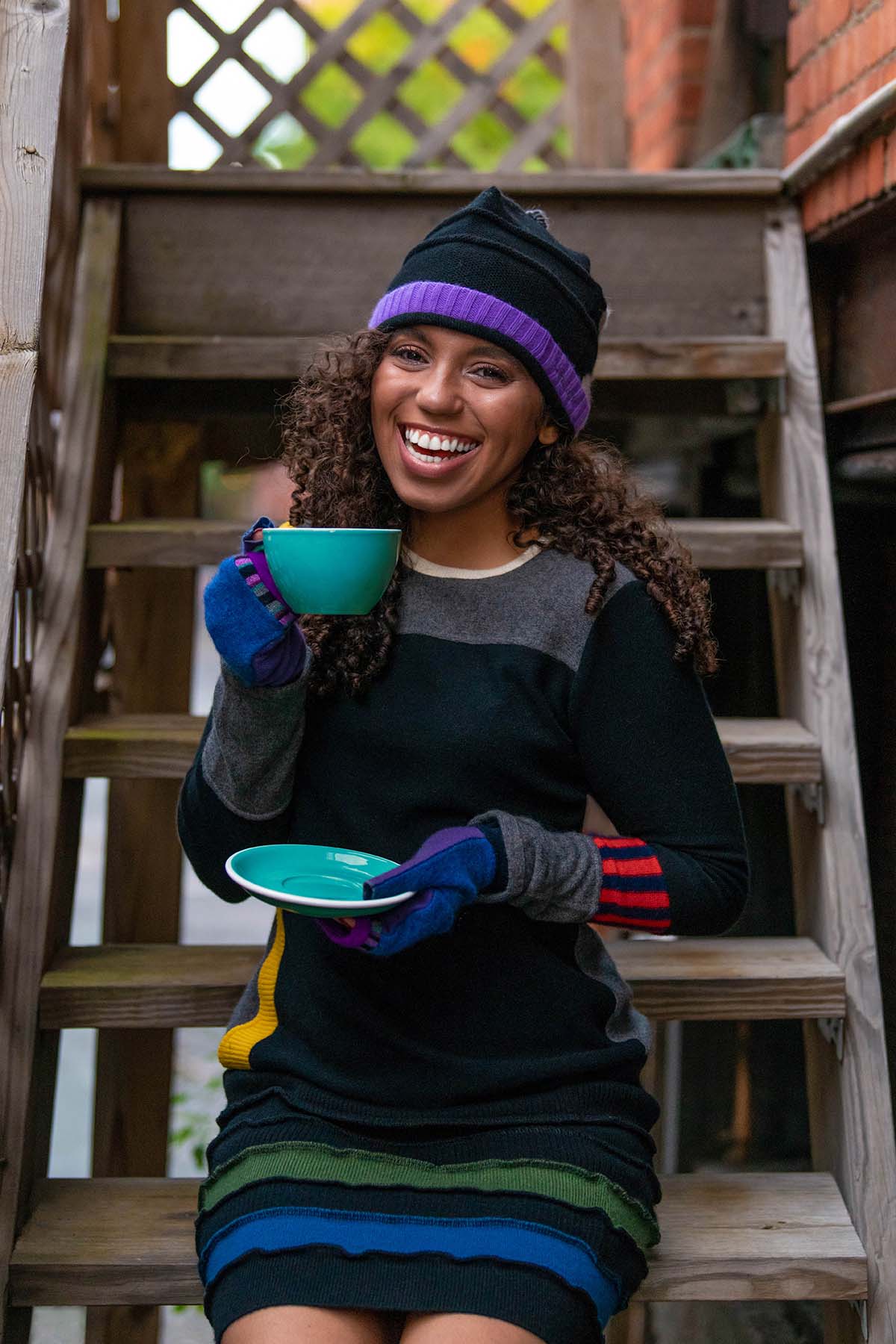
Kathleen Tesnakis, Cashmere clothing fashioned from recycled material. ©2021 ekologic, Inc. Courtesy of the artist.
Kathleen Tesnakis describes her mission as “Apparel ReVisioned.” Her small design studio – ekologic – offers the luxury of cashmere with minimal environmental footprint. The process begins with a hunt for “treasures” – discarded, high quality cashmere sweaters. The studio washes and dismantles each find by hand, piecing the fabric swatches together to create unique designs. The collection proves that recycled products can be even more beautiful given a second life. Since 1996, the studio has rescued and reused over 16 tons of pre-owned material.
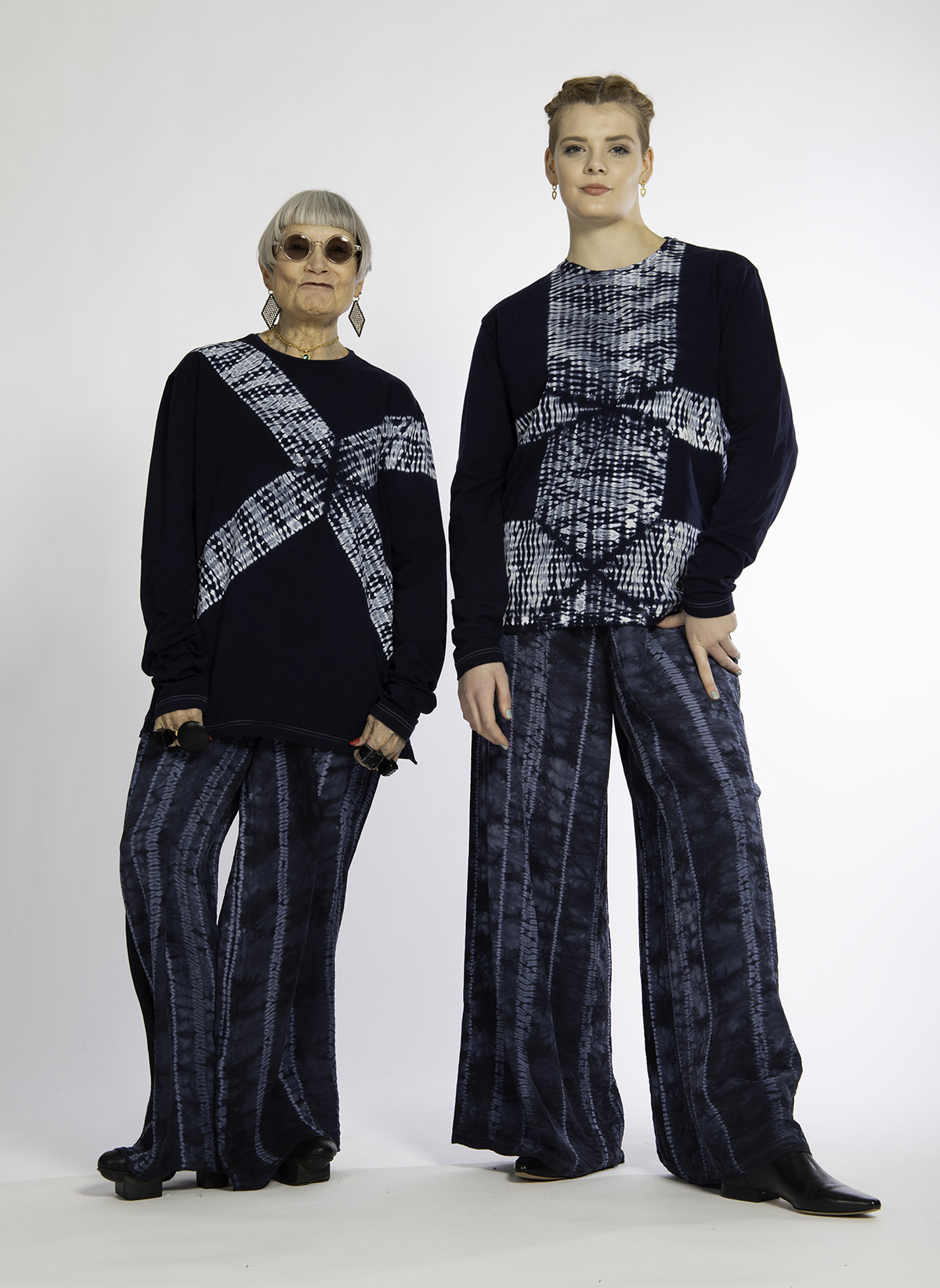
Mary Jaeger, Personalized Shirt collection. Repurposed discarded men’s cotton tailored shirts. ©2021 maryjaeger.com. Courtesy of the artist.
Mary Jaeger also sees scraps not as waste, but as inspiration for new products. Her “Personalized Shirt” collection gives new life to stained, worn-out men’s cotton tailored shirts. She creatively deconstructs the shirts, dyeing, stitching and transforming them into striking, one-of-a-kind, non-gender specific shirts and jackets. Reconfigured scraps also form her PLEATED SILKS collection of dynamic, colorful wearables.
II. Lending modern interpretations to age-old techniques
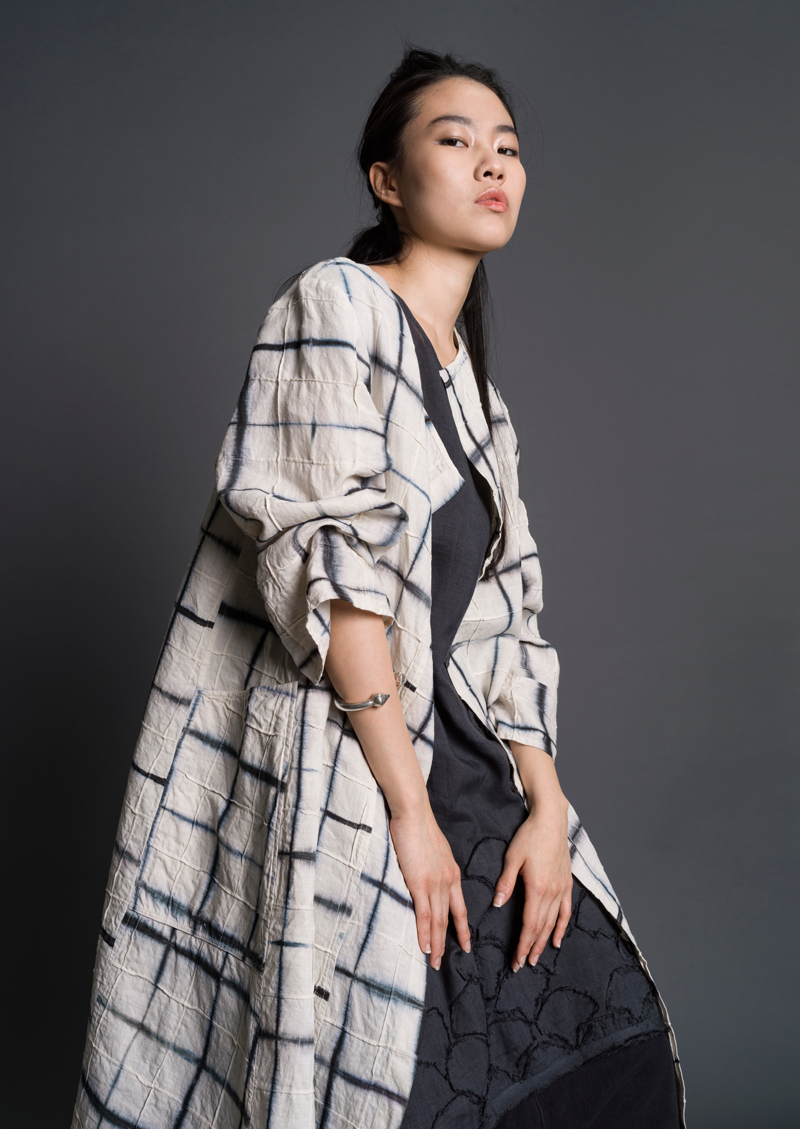
Amy Nguyen, Artisan Coat. Hand-dyed itajime shibori linen, overdyed, folded, stitched, pieced. ©2021 Amy Nguyen Textiles. Courtesy of the artist.
Amy Nguyen studied under master textile artist Yoshiko Wada, who introduced the Japanese art of shibori (a tie-dyeing technique) to the United States. Nguyen draws upon shibori and other ancient Japanese textile arts – as well as her lifelong interest in dance and yoga – to create textiles with beauty, movement and flow.
Striving for minimal environmental impact, she uses only natural, renewable fibers; consciously sources dyes; relies on wind power; minimizes water use with low-water immersion dyeing; and uses every scrap of fabric to avoid creating waste. She adds couture details: “The back or inside of each piece is as important as what is shown on the outside.” Consequently, her garments acquire “patina” as they age, reflecting “a textile that has been loved over time.”
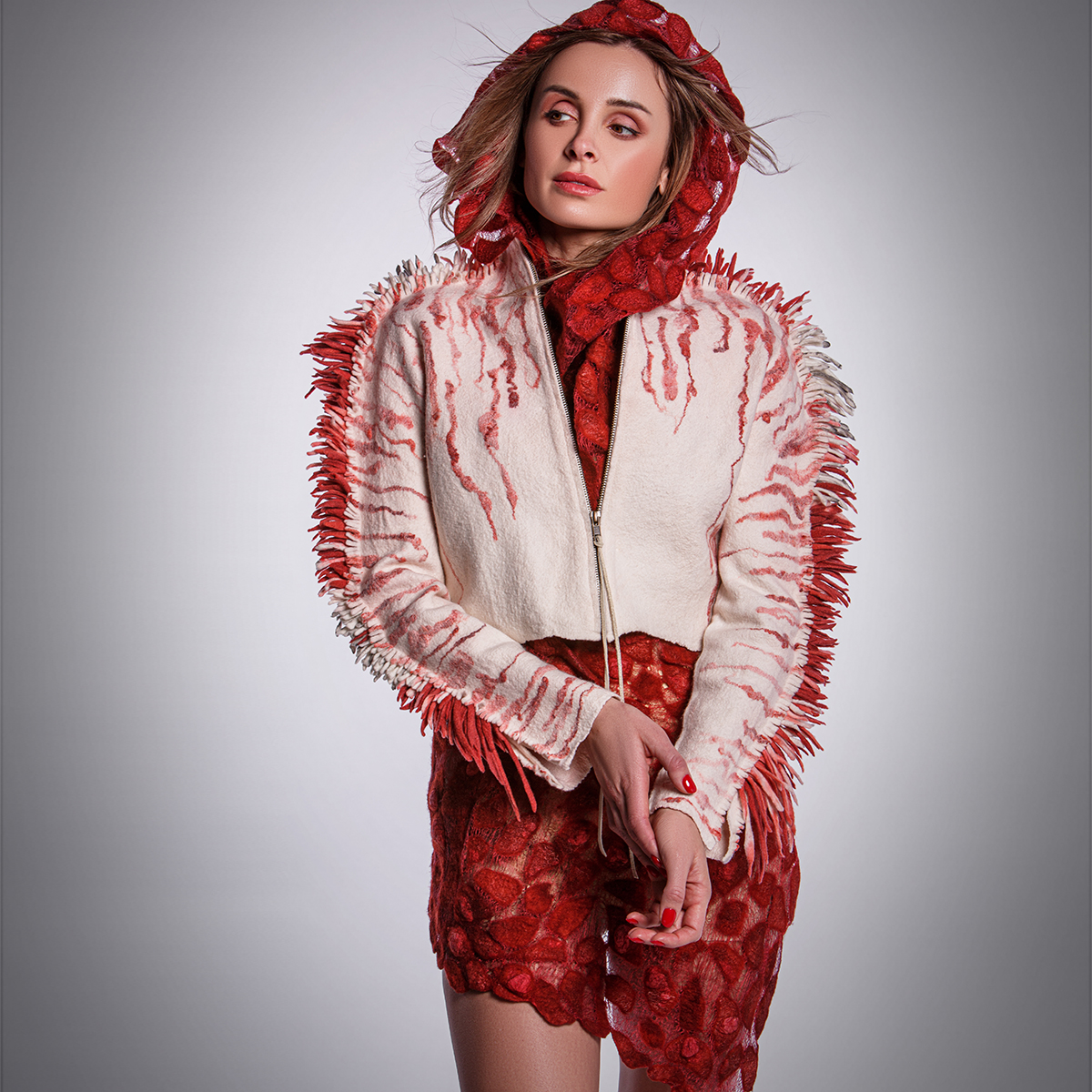
Jeanne Akita, Ice Lava Breath Jacket. Superfine merino wool, Tussah silk. ©2021 Illusions Lab. Courtesy of the artist.
Though felt is one of the world’s oldest textiles (dating to the 6th century BC), Jeanne Akita recognizes the technique is still developing – and her award-winning collections prove its contemporary appeal. She calls felting a “great eco-recipe…a manual process that requires just hand agitation, a small amount of water, and natural soap.” She sources natural fibers from a wide range of animals (sheep, goats, camels, alpacas, paco-vicunas, silkworms) and plants (cotton balls, sisal leaves, coconut husks, stalks of jute, hemp, flax, and ramie, among others). Recycled silk saris may find their way into her collection too. For a final touch, she brush paints the felt – or uses shibori dyeing – to achieve striking works of art.
III. Designing for longevity.
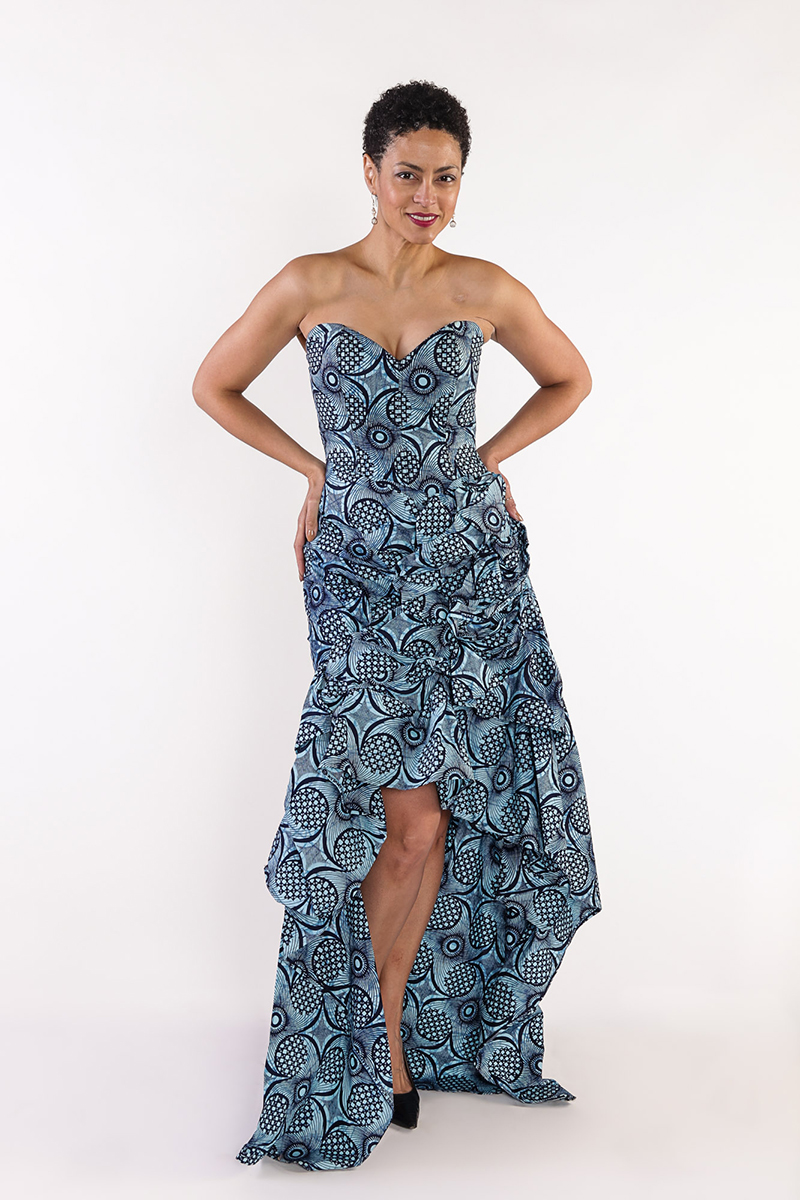
Queen Allotey-Pappoe, Gown. Cotton wax print fabric. ©Queen Adeline 2021. Courtesy of the artist.
Queen Allotey-Pappoe sums up her mission succinctly: “We don’t follow fast-fashion trends.” Her studio’s designs are made in small batches to avoid wasteful overstocks. She relies on biodegrable natural fibers and salvaged fabric. Striving for “zero waste,” she minimizes the use of zippers, structures garments to use a complete textile, and redesigns scraps into accessories. She also designs for year-round wear – to maximize the utility of each garment and to spare customers the need for further consumption (and more closet space).
The message from each of these artists is clear: consumers now have exciting alternatives to “fast fashion.” Visit Craft Optimism to see these – and many more – creative ideas for building a stylish wardrobe that honors the earth, these trailblazing artists, and our legacy to future generations.

